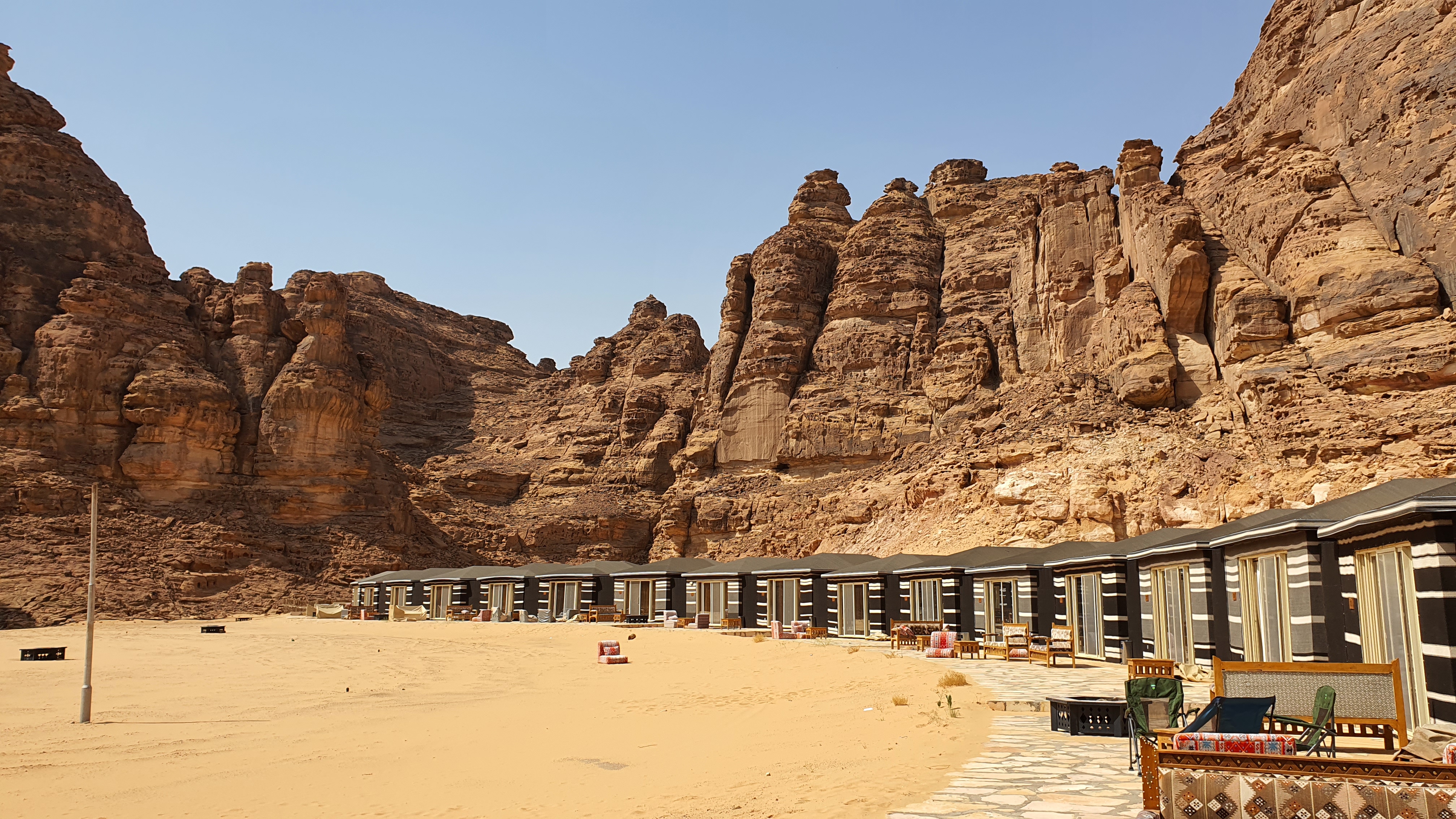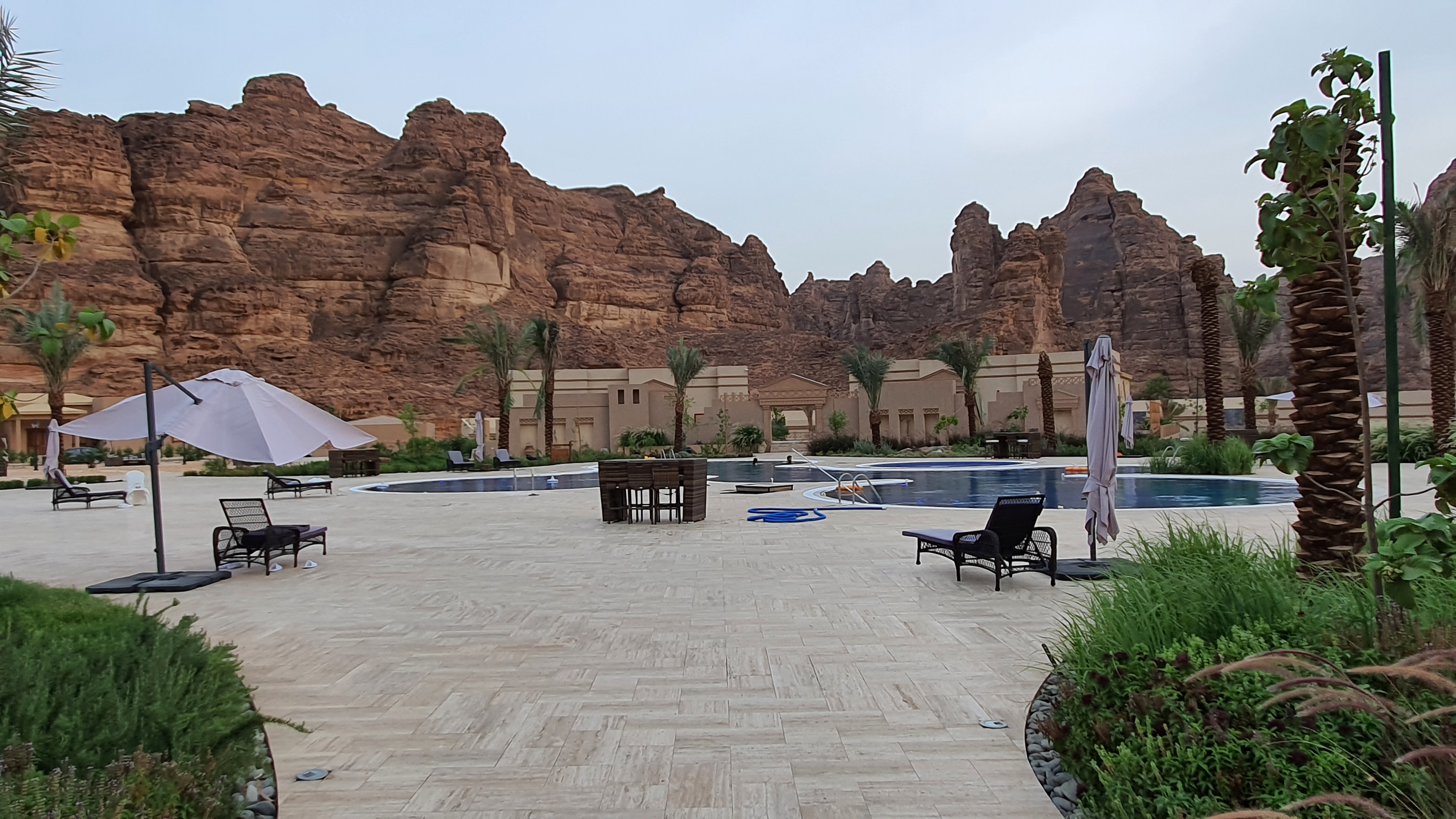Lockdown Breakout (1 - Tabuk and Al Ula)
The Eid al Adha holidays follow the Hajj, and this means a few days off work. In the previous years I have used this period as an opportunity to leave the Kingdom by booking travel or a return home at the last minute. The reason bookings are only possible at the last minute is because the time granted off is at the pleasure of the monarchy, and different allowances are made for Saudis and ex-pats. Whilst I could take a punt at guessing the days allocated, this could backfire and I might be left in a negative leave situation which would make the remainder of the year’s plans tricky.
Once the leave dates were revealed, we looked at options. Leaving the country was not possible due to the current restrictions in force. So we looked at domestic possibilities and decided to visit the north-west of the country. We have friends who used to be based in Riyadh but moved last year to the Neom project in Tabuk province. For high level details of this amazing project please look at https://en.wikipedia.org/wiki/Neom Meeting up with them would be nice. But how to get there? Flights to Tabuk are greatly restricted at the moment and rather expensive. So we booked a private cabin on the overnight SAR train from Riyadh to Al Jouf (925km distant), and hired a car for 3 days. After a 440km drive we were in Tabuk city before lunch. We had booked 2 nights at the Hilton Garden hotel in Tabuk, and Elaine has a hotel loyalty club membership and this entitles us to early check-in.
On arrival at the hotel, it was locked. No sign of staff inside, and only another would-be guest sitting outside who didn’t speak a lot of English but suggested that reservations had been moved to the nearby Holiday Inn. We tried to call the Hilton contact number but got no answer. So we drove to the Holiday Inn, (the only other western branded hotel in Tabuk) and were prevented from entering the car park. The security guard advised us the hotel was closed and being used as a coronavirus treatment centre. So we retreated to a coffee shop to have lunch and consider options. Eventually the Hilton Garden answered the phone, and we were advised that all bookings had been summarily cancelled as the hotel had been “taken over by the Government”. Apparently all reservation holders had been sent messages, but we certainly hadn’t received anything. There was no room at any of the other acceptably decent hotels in the city, so we looked at options over on the Red Sea coast. There was availability at one resort hotel near Sharma, but the prices were ridiculously high (over £1,000 per night). We turned our attentions to the south and the next nearest place with a decent hotel was Al Ula which was half-way to Madinah and a further 300km drive. We made reservations and set off.
The road was quite mundane at first, but as we got further south and into the Hejaz mountains the scenery started to get interesting and made the drive pleasant. We also picked up the route of the old Hejaz railway which ran from Damascus through Jordan, Tabuk and Al Ula onwards to its terminus in Madinah. The railway was completed in 1908 and substantially destroyed during the first world war (notably though attacks by TE Lawrence). It was never revived. At intervals we passed remarkably intact but abandoned stations. Approaching Al Ula some of the sandstone outcrops took on weird and wonderful shapes. These were rocks that had been shaped over millenia by the effects of wind-borne sand erosion. We stopped on several occasions to take photos. (If anyone were to ask me what the best thing since sliced bread is, I’d be tempted to respond with digital photography. We took hundreds of photos in our break away).

On arrival at the Plan B hotel we were delighted by its setting. It was secreted in the hills, invisible from the road and set in a natural amphitheatre of rock outcrops and based on the style of a Bedouin campsite around an outdoor swimming pool and with high class facilities. It was lovely.

Shaden Resort

The next day we went out to explore the area. The scenery was stunning. Al Ula town is set in a fertile valley oasis with irrigated date palm farms. It has been settled for over 2,000 years with the abandoned district of Tantora comprising of over 800 densely packed homes, mosques and souks. This old town is apparently one of 3 remaining Islamic cities and dates from 1300 AD. However, entry to Tantora was not permitted due to the current health restrictions. It isn’t fenced off, but there were security patrol cars blocking the access road. We were able to take a couple of photos of the periphery though.

Tantora abandoned village
Next up was
a half-hour drive out of the town to Madain Saleh. Formerly known as Hegra this
is the World Heritage site where there are ancient Nabatean tombs carved out of
rock faces. It is similar to Petra in Jordan, which is visited by millions each
year, and remains on my bucket list. However the site is understandably protected
by peripheral fencing with an entry point. Here we were advised that it was closed.
Being the Eid weekend Friday, this was understandable as the Saudis were focusing
on their religious devotions. We enquired at what time it would reopen and the
answer was “October”. Apparently another Coronavirus victim.
So,
disappointed, we went back into the sandstone outcrops to see the most famous
one, called the Elephant Rock. This isn’t visible from the road system and involves
a drive about 1 mile across the desert from the nearest road. Fortunately the
sand was well packed and navigable in a front-wheel drive car and we followed
the tracks of those who had preceeded us. It was great to see, just standing on
in the desert with other weird shaped rocks about.  One of the things I really
liked about the whole Al Ula area is how uncommercialised it is. In the UK
Elephant Rock itself would have been fenced off, protected by the National
Trust or another heritage body, have an organised carpark, entry fees and a gift
shop with souvenirs, ice cream outlets etc etc. Here just nothing apart from a
small sign on the road pointing towards the rock. As tourism in KSA takes off
this may change of course.
One of the things I really
liked about the whole Al Ula area is how uncommercialised it is. In the UK
Elephant Rock itself would have been fenced off, protected by the National
Trust or another heritage body, have an organised carpark, entry fees and a gift
shop with souvenirs, ice cream outlets etc etc. Here just nothing apart from a
small sign on the road pointing towards the rock. As tourism in KSA takes off
this may change of course.
(Continued in Part 2).
I will finish off here with some more scenic photos of the area...

Fine balance

A sand piste?

Hejaz Railway wagon abandoned over 100 years ago outside Al Ula station

"One day my son, all these rocks will be yours"
